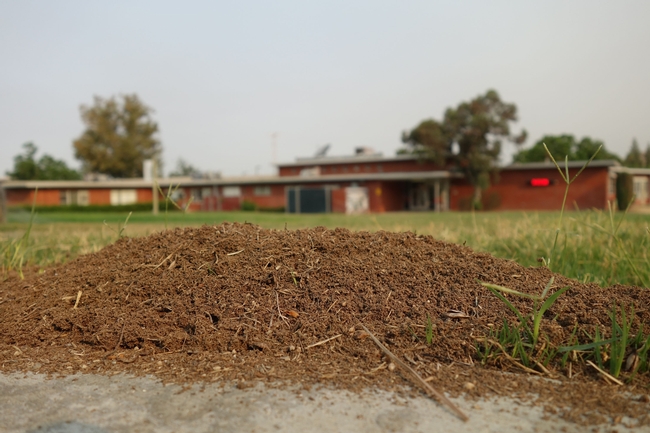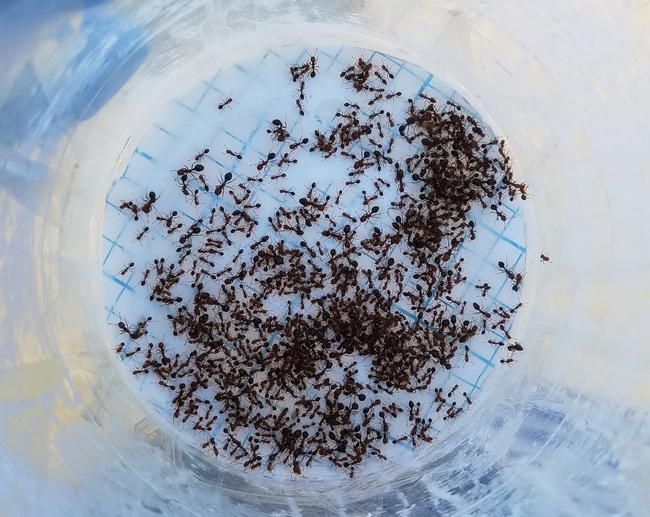As winter turns into spring, Southern California residents who live in areas where the red imported fire ant has taken hold will want to keep a close eye out for colonies establishing themselves in lawns, parks, schools and golf courses.
Red imported fire ant (RIFA) arrived in California in 1989, and is widespread in residential and commercial areas of Orange, Riverside and San Bernardino counties, and adjoining areas of Los Angeles County. True to its name, the fire ants inflict painful, burning stings when they crawl onto people working, walking or resting on infested turf grass and other outdoor areas. For some people, RIFA bites and stings can lead to life-threatening anaphylactic shock.
RIFA is difficult to eradicate, but care and attention can reduce the population to a level that minimizes the risk of injury, said Siavash Taravati, UC Cooperative Extension integrated pest management advisor in Southern California. He helped the California School for the Deaf in Riverside control an exploding RIFA population on its 70-acre campus, and turned the effort into a research project with results that can help other Southern California agencies deal with red imported fire ant infestations.
“The School for the Deaf's grounds crew was struggling to control RIFA, but had little success,” Taravati said. “It's a huge school with students from elementary to high school. They have football, baseball and softball fields and even housing on the campus.”
The school's grounds crew had drenched ant mounds with liquid insecticides, but only achieved temporary control. With financial support from the California Department of Pesticide Regulation, Taravati evaluated some of the most common products available for RIFA control, available in commercially formulated corn grits that are coated with soybean oil containing the pesticide.
Children must be kept away from the treated areas during and immediately after applications. Touching or eating fire ant granules might be harmful to children and adults.
"Schools must give parents, guardians and staff the opportunity to register to be notified 72 hours in advance of individual pesticide applications,” Taravati said. “Also, there must be warning signs in the area where a pesticide will be applied, at least 24 hours before and 72 hours after the application."
To gain the most accurate information about RIFA control from this project, Taravati used two different school sites and marked 35 locations of RIFA activity with construction flags and spray paint, then treated areas with various pesticides, and monitored them for a year. The pesticides he used contained indoxacarb, hydramethylnon s-methoprene, and boric acid. Taravati measured RIFA activity before and after treatment.
“After a few months, the number of RIFA mounds were reduced by 96% in the some of the most problematic areas,” Taravati said. “Even when new mounds appeared on the lawn, they were always small in size.”
The RIFA control guidelines that Taravati introduced were adopted by the school staff to maintain a safe environment for the school's 500 students.
“Many pesticides for RIFA control are designed and marketed to professional applicators, but there are some that residents can purchase in home stores or online,” Taravati said. Detailed information about RIFA pesticide options are spelled out on the UC IPM website pest guidelines at http://ipm.ucanr.edu/PMG/PESTNOTES/pn7487.html.

